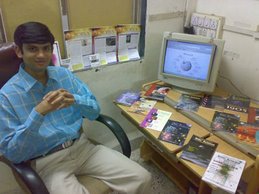By SETH BORENSTEIN, AP Science Writer
A massive exploding faraway star — the brightest supernova astronomers have ever seen — has scientists wondering whether a similar celestial fireworks show may light up the sky much closer to Earth sometime soon.
The discovery, announced Monday by NASA, drew oohs and aahs for months from the handful of astronomers who peered through telescopes to see the fuzzy remnants of the spectacular explosion after it was first spotted last fall.
Using a variety of Earth and space telescopes, astronomers found a giant exploding star that they figure has shined about five times brighter than any of the hundreds of supernovae ever seen before, said discovery team leader Nathan Smith of the University of California at Berkeley. The discovery was first made last September by a graduate student in Texas.
"This one is way above anything else," Smith told The Associated Press. "It's really astonishing."
Smith said the star, SN2006gy, "is a special kind of supernova that has never been seen before." He called the star "freakily massive" at 150 times the mass of the sun.
Observations from the Chandra X-ray telescope helped show that it didn't become a black hole like other supernovae and skipped a stage of star death.
Unlike other exploding stars, which peak at brightness for a couple of weeks at most, this supernova, peaked for 70 days, according to NASA. And it has been shining at levels brighter than other supernovae for several months, Smith said.
And even at 240 million light years away, this star in a distant galaxy does suggest that a similar and relatively nearby star — one 44 quadrillion miles away — might blow in similar fashion any day now or 50,000 years from now, Smith said. It wouldn't threaten Earth, but it would be so bright that people could read by it at night, said University of California at Berkeley astronomer David Pooley. However, it would only be visible to people in the Southern Hemisphere, he said.


No comments:
Post a Comment